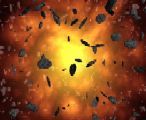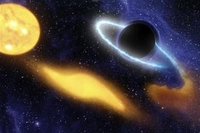
I predicted that the International Astronomical Union’s ABSURD definition of what counts as a planet would not stand the test of time and would get revised.
Now others are saying the same thing (EXCERPTS):
Rather than crafting an acceptable definition, the IAU alienated members, put the group’s authority in jeopardy and fueled schisms among astronomers on theoretical grounds and even nationality.
The controversial planet-definition resolution, passed Aug. 24 in a vote of just 424 IAU members, will not stand as worded. Some 300 astronomers have pledged not to use it, and many others say it must be redone to eliminate contradictions. It will be reworked, at the least, and possibly overturned at the 2009 IAU General Assembly in Rio de Janeiro, Brazil.
The Great Pluto War alienated many of the roughly 10,000 professional astronomers around the world who did not have a chance to cast a vote.
Good. Now let their voices be heard.
It really is appalling to me that the IAU adopted such a boneheadedly short-sighted definition that only covers objects in our solar system and is based on irrelevancies such as what kind of orbit it has as whether or not it has cleared its orbit of competitor bodies.
The author of the piece makes some very good points, though I don’t agree with everything he says. He is of the opinion, for example, that we will never have a definition for what counts as a planet. I don’t think we’ll have one soon, but eventually common sense will prevail.
There is a perfectly common-sense definition of "planet" that is easy to understand and will unambiguously apply to the vast majority of planets we find outside the solar system, regardless of what kind of orbit (if any) that they have: A planet is something big enough to be round because of its own gravity but not big enough to start nuclear fusion and become a star.
With the progression of time, the obviousness of this definition will force itself more and more on the astronomical mind and, in coming years and decades and centuries, the definition of planet will more and more approximate what I just wrote.
Yes, this definition leads to our solar system having considerably more planets than the ancients thought.
So what.
You don’t want to know more than the ancients did?
Yes, it leads to the Moon being a sister planet of Earth’s.
So what.
The Moon was one of the seven classical planets recognized by the ancients. Mankind has thought of the Moon as a planet before and–if common sense prevails–it will so again. Modern attempts to define what a planet is and discover more of them are attempts to build on the nature of the classical planets, and the definition I gave above fits six of the seven classical planets.
I’m willing to concede, of course, that further learning since ancient times has revealed that the sun is more like the stars in its nature and not the other planets, and so we today think of the sun as a star.
We should, however, think of the Moon as a sister-planet.
Because that’s what it is.
GET THE STORY.
(CHT to the reader who e-mailed!)





